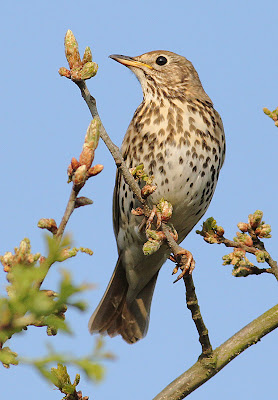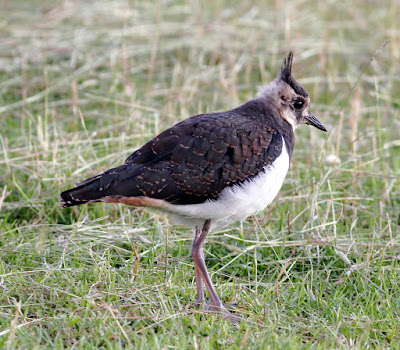Bird ringers must grab every opportunity on offer in these windswept weeks even though such times may not be ideal. And so it was that we pencilled in Tuesday morning’s forecast of a three hour slot and a strengthening breeze as perhaps the only chance of the week.
When soon after six I opened the house door to the morning air I was greeted by the unmistakeable staccato of a rare bird - a Song Thrush no less.
It was too dark to photograph the thrush but I noted that it sang from the same part of hedge where a number of years ago a pair bred successfully. That must be eight or more seasons ago so while it’s very unlikely the thrush was a survivor of that brood, a bird of any species always picks their ideal habitat in which to set up home. Let’s hope he soon finds a mate and nests again in the hedge we share with a neighbour.
Another rarity was soon to follow with a Grey Partridge very close to the entrance to our ringing site. I am fairly sure that in this area of Fylde, Lancashire the Grey Partridge is rarer than a Song Thrush.
I met Andy at 0630 and nets were soon up to a 5mph southerly, so far so good. Even better were the first migrants of the year caught early on as a Chiffchaff and 2 Goldcrests, all three males out to stake their claim wherever they were headed. As early morning migrants all three tipped the scales at less than 6 grams. When later inputting details into DemOn, the system prompted a check of the Chiffchaff weight as below the species' expected range.
These birds were a great start to a morning, one that petered out when the wind increased to 10 and then 15mph. At one point we could see a Grey Wagtail balanced on a branch directly next to a blowy net. There was no way the wagtail would be caught, even Grey Wagtails aren’t that dozy - 10 o’clock it was time to pack in.
Goldcrest
All was not lost when upon neutralising the wind-socked nets a female Sparrowhawk decided to fly directly into the nearest one. Had we not been quick off the mark it would surely have escaped from the billowing mesh with a flap or two of its wings.
The second year female could best be described as “feisty”, with legs and sharp talons lashing out at every opportunity. It was ringed and released pretty quickly but not before it had drawn blood from pierced fingers.
Sparrowhawk talons
Sparrowhawk
So ended an eventful if not very productive morning of just seven birds – 2 Goldcrest, 2 Reed Bunting, 1 Chaffinch, 1 Chiffchaff, 1 Sparrowhawk.
Andy is off with Sandra to the winter sunshine of Egypt on Saturday and is keen to fit in more ringing on Friday. Pencilled in once again.
Fingers crossed. We shall see.
Linking today to Anni in Texas and Eileen's Saturday Blog.



































































.jpg)












